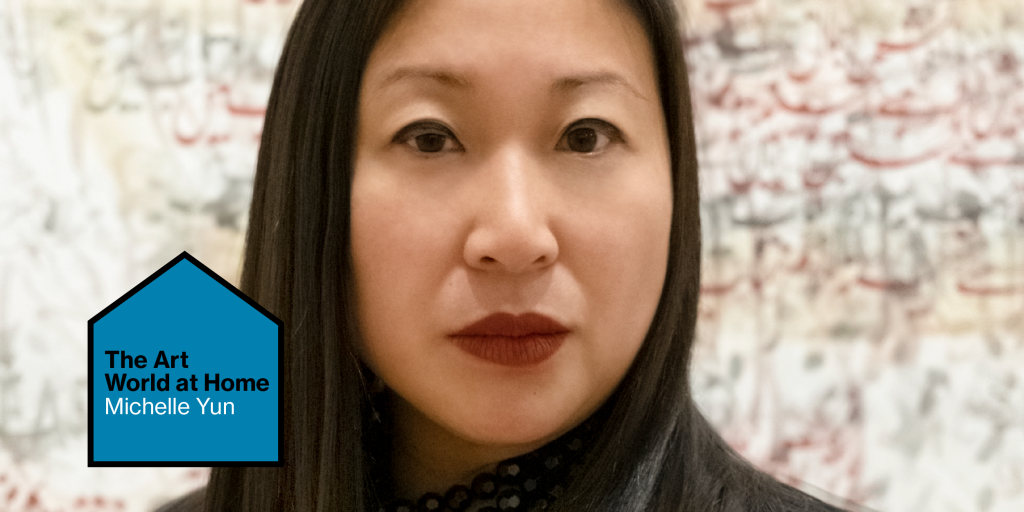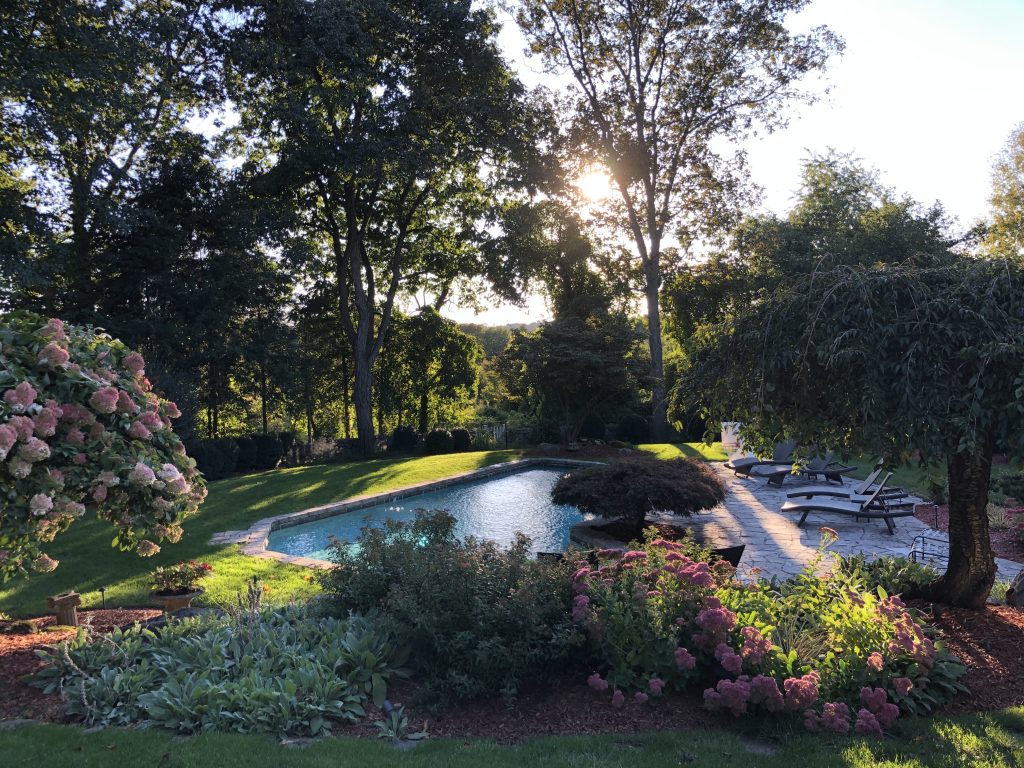People
The Art World at Home: Asia Society Museum Director Michelle Yun Is Finalizing the Institution’s Triennial and Floating in Her Pool
We caught up with Yun about life in the galleries and life at home.

We caught up with Yun about life in the galleries and life at home.

Artnet News

Michelle Yun, the recently appointed director of the Asia Society Museum, is in the midst of planning part two of the institution’s ambitious triennial, part one of which opened in October. Between now and March, when part two will be unveiled, there is a lot to do: finalize the catalogue, complete the installation, and get the word out to the public.
We caught up with Yun about life in the galleries and how she relaxes at home.
What are you working on right now?
I always have multiple projects in process, but my primary focus over the past five years has been the inaugural Asia Society Triennial. It was originally scheduled to open in May 2020 as a citywide initiative, but due to the pandemic, we had to restructure the scope and format into two successive parts. Part one opened on October 27, and since then, I have been focused on maximizing the physical and virtual visitorship to the exhibition and its related programming. Part two will open on March 16, 2021, so we are in the midst of finalizing plans for the changeover and installation of the next roster of artists while continuing work on the exhibition catalogue, related programming, and outreach.
I was appointed vice president for global artistic programs and director of Asia Society Museum following the opening of Part one of the Triennial, so have been concurrently getting up to speed with my new responsibilities and mapping out my vision for the future of the museum.
Walk us through the when, where, and how of your approach to this project on a regular day.
Regardless of the day, my schedule is generally packed with back-to back-meetings, so I typically begin work at 5 a.m. to get in some writing and to follow up on correspondence and other administrative responsibilities. This is followed by meetings with artists, lenders, sponsors, press, museum staff, and other stakeholders to discuss the scope of needs across the triennial and our additional upcoming exhibitions and initiatives.
Now that the triennial has opened, I am often in the museum in the afternoon hosting special guests. After six months of working remotely, it has been restorative to get back into the galleries and to be immersed in the powerful and timely artworks that I have been thinking about for so many years. I have a young son so the early evening is reserved for family time. After he gets put to bed I hop back on the laptop to follow up on outstanding issues relating to the day’s meetings.
What is your favorite part of your house and why?
Our backyard pool has allowed us to spend meaningful time socializing with friends and family despite the limitations of the pandemic. It is a versatile oasis that I gravitate to in the warmer months for fun and catharsis. When the trees are in full bloom, it is possible to become fully immersed in the beauty of nature and one of my favorite ways to unwind is to pipe my playlist through the Sonos system and aimlessly float, meditating on the blue sky above and contemplating the limitless possibilities life has to offer.

The pool.
What is bothering you right now?
I am really troubled by the divisiveness, lack of civility, and erosion of belief in facts and science as a basis for reality that has pervaded the United States and elsewhere.
What was the last thing that made you laugh out loud?
I am indebted to the daily repartee among my museum colleagues. Their ability to inject a healthy dose of levity into our daily meetings has sustained me through the more grueling aspects of the triennial.
Are there any movies, music, podcasts, publications, or works of art that have made a big impact on you recently?
I just reread The Sympathizer by Viet Thanh Nguyen. Revisiting the novel in the context of the acute discrimination Asian Americans and other minority groups continue to face underscores the urgency to increase the agency and representation of underrepresented communities to dismantle structural inequities embedded in society.

Edward Mapplethorpe. Sunday, September 14, 2014; 8:24pm (2014). © Edward Mapplethorpe.
What’s your favorite work of art in the house and why?
We have many wonderful works given to us by dear friends that I treasure for their intrinsic merits and associated sentiments. However, my favorite is a portrait of my son taken on his first birthday by my husband, Edward Mapplethorpe. It is part of his ongoing series of portraits of one-year-old children that now spans over 25 years. As with so many in the series, the portrait succinctly captures the essence of my son’s personality and offers a glimpse into his emerging consciousness, self-possession, and individual identity.
Are there any causes you support that you would like to share? If so, what, and why is it/are they important?
I am distressed by the recent uptick of discriminatory behavior towards Asian Americans relating to the COVID-19 pandemic. Among the Asian American arts community, coalitions like the Asian American Arts Alliance, GYOPO in Los Angeles, and Stop DiscriminAsian provide much-needed platforms to raise awareness of this troubling pattern and offer resources and support to combat anti-Asian harassment and discrimination.
What is your guilty pleasure?
I love catching up with friends over cocktails, and my latest indulgence is an ongoing, wine-infused fireside backgammon tournament with my neighbor (socially distanced and outside, of course!).
What’s going on in the kitchen these days? Any projects? And triumphs or tragedies?
For me, cooking is a form of relaxation and creativity. During the pandemic, I have been leaning heavily on family recipes as a way to feel closer to my relatives from afar and to introduce my son to his Chinese heritage. One small achievement I am proud of is that I’ve finally come close to perfecting the crispy consistency of our family’s pan-fried dumpling recipe.
Which two fellow art-world people, living or dead, would you like to convene for dinner, and why?
Strong women collectors have played a pivotal role in defining the US-based museum. Taking into consideration my new post as director of Asia Society Museum, I would love to sit down with Lillie P. Bliss, a founder of MoMA, and Alice Walton, the founder of Crystal Bridges, to discuss their visionary philosophies on collecting, the origins of their respective trailblazing visions, their thoughts on the state of the art world, and the future of museums.